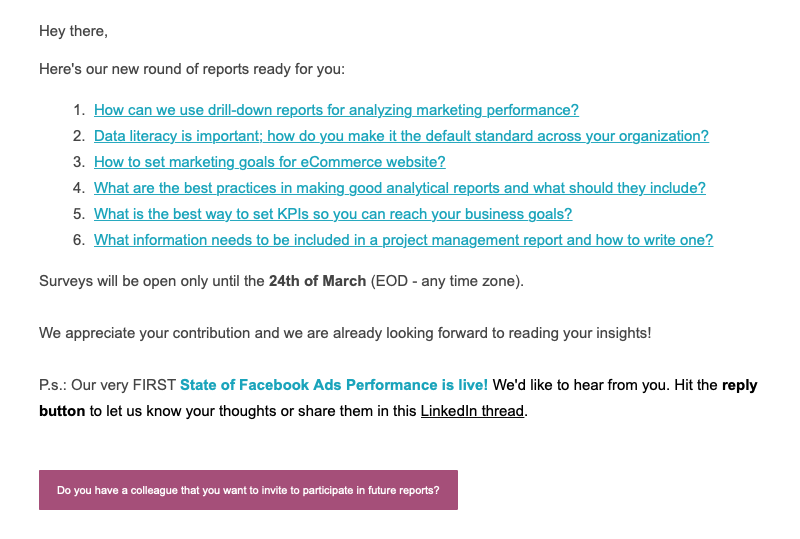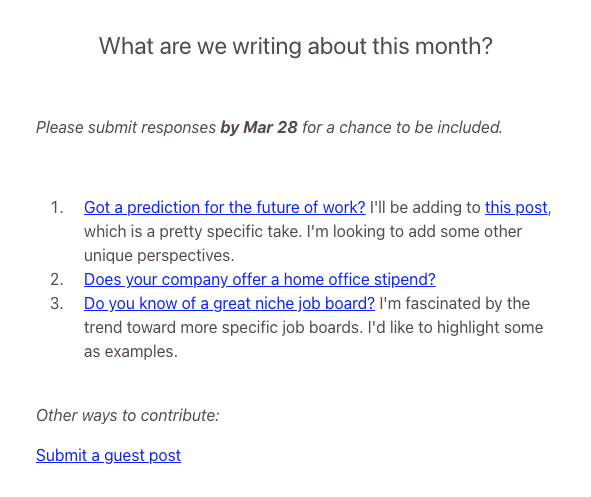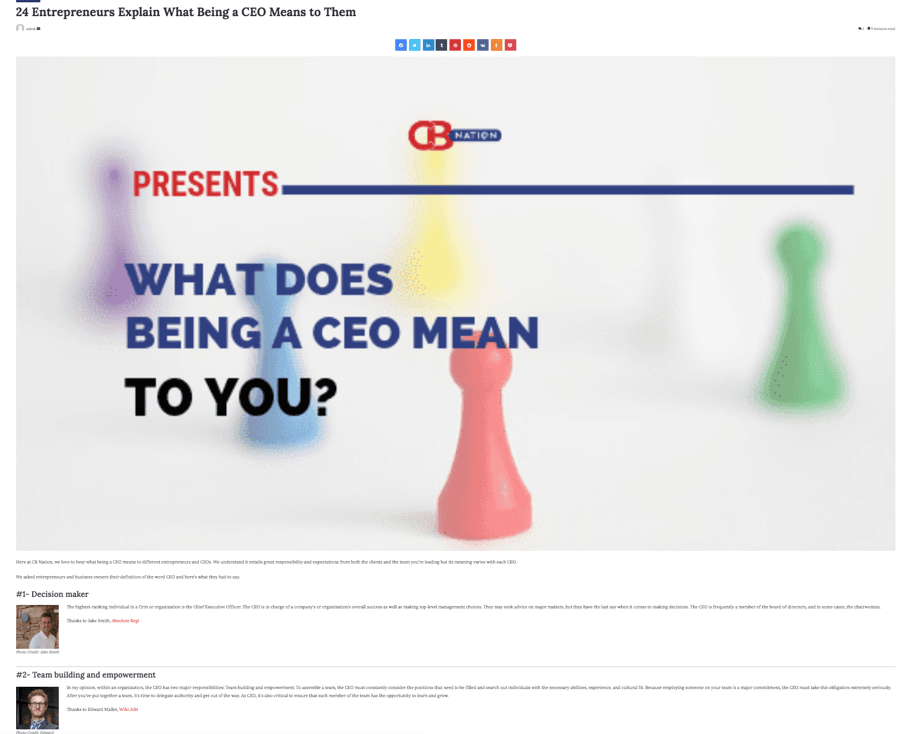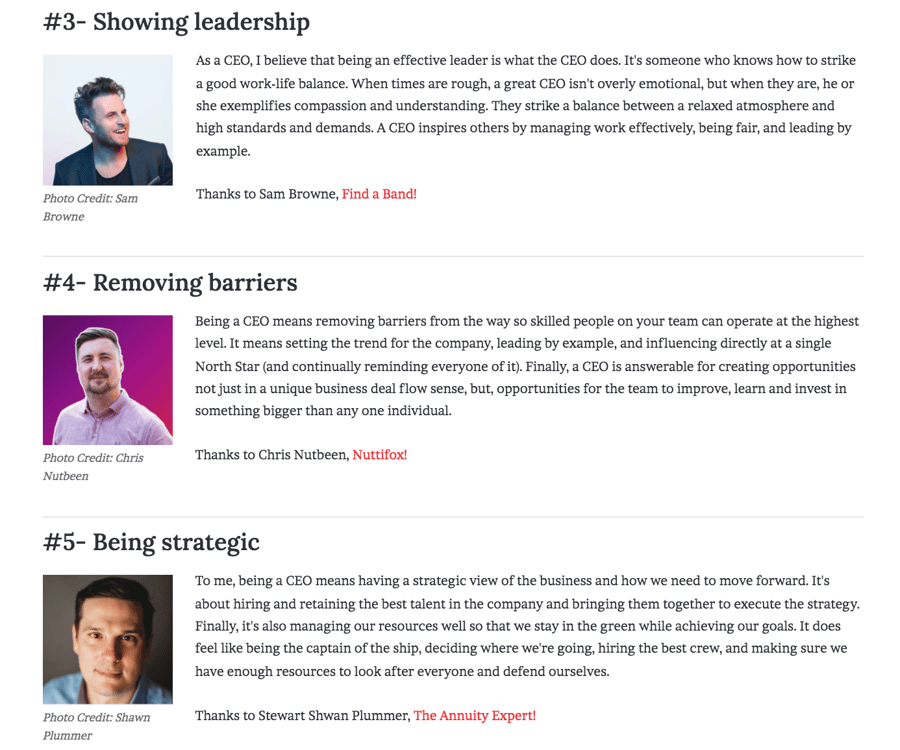How To Build A Network Effect For Your Content



How do you write content people want to read?
The standard procedure for creating an article as an inbound marketer is to write content based on what the company knows or what they can find based on internet research. This is the OG premise of inbound marketing—your audience will want to read your content if it is helpful to them, if they can learn something, or if it can assist them in decision-making. It’s not interruptive nor distractive, and meets the reader where they are.
But inbound marketing got crowded. So many people began writing content and positioning it as helpful that this space became noisy and repetitive. Enter network content creation.
Creating Content Via Networks Vs. “Traditional” Inbound Methods
Instead of broadcasting out information and hoping it reaches the right people based on inbound methodology alone, we (and other marketers) are finding success in asking our customers and/or readers to contribute to posts. In other words, we’re asking our readers and customers to help us create interesting content.
Why does it work?
Network content creation works on a psychological level. People are more likely to give their opinion than be interested in reading yours. By asking them to contribute their thoughts and opinions to your work, you’re more likely to get higher open rates and response rates. One note: You still have the responsibility to vet what your contributors say!
Other reasons why this tactic works:
- People are more receptive to reading “crowdsourced” information from reputable sources.
- Those who contribute get publicity and links on your site. (Marketing teams know this exposure is valuable, so they’re even more willing to contribute.)
- Contributing increases social exposure. If the post someone contributes to gets thousands of views per month, that’s helpful to them.
So it’s a win-win to ask people to contribute.
3 Examples Of Successful Network Effects In Content Marketing
1 Databox
Databox sells a reporting dashboard that plugs into other marketing software tools like HubSpot, so users can present marketing results to clients or their own teams. The company sells primarily to marketing agencies like Nectafy; as a result they’ve built an email list of contributors who are just like us—marketing agencies who are willing to share their info with them in exchange for backlinks or shout-outs.
Most of their blog posts feature insights from dozens of industry pros. To get this info, the Databox team sends out email lists to their list of contributors asking them to submit ideas through a survey.

2 Buildremote
Henry O’Loughlin, founder of Buildremote, has only bought two or three desks—ever. So how can he legitimately write a post about the best home office desks out there without faking data?

Well, he used his own desk—and HARO. In this case, the topic he was writing about was a good fit for crowdsourcing. It didn’t require any expertise, just a specific audience, so he posted the query on HARO and used the responses he got. From there, he was able to quickly sort answers and share them. If you’re writing about something that requires a large number of opinions—and which you can’t pull off using only your perspective—this method is a good way to go.
How did Henry create this post?
He used HARO to survey anyone willing to answer the question. Then, he sorted the answers as they came in. Again, this wasn’t complicated to create or write—it simply requires figuring out what you want to ask and following a process for sharing what you find. Because you have data to back up what you’re sharing, instead of BSing an answer, you’re providing as many real people and their experiences as you can to provide input.

3 CEO Blog Nation
CEO Blog Nation operates using the same strategy as Databox—ask your audience (who is also your target audience) to ask questions, get opinions, share experiences, and generate content.

Take its article 24 Entrepreneurs Explain What Being a CEO Means to Them. In it, a couple dozen entrepreneurs share personal experiences and anecdotes unique to them. The company did a nice job of using images, designed quotes, and backlinks for each of the entrepreneurs.

How much could your company grow with growth content?
Calculate your expected growth in organic visits based on the average Nectafy client.
Get all these numbers in your inbox.
Why Network Contribution Works
As we see in the examples above, the companies who ask for contributions get high-quality content because they’re gathering data, anecdotes, and information from people who actually work in the industries the content is targeting. They are able to share 10, 20, 30, etc., viewpoints at a time in larger posts because they crowdsource from experts.
Those featured in the articles are more likely to share them, attracting even more readers in the target audience. Think about it this way—instead of being “sold to,” these companies provide value by featuring their contributors' own opinions.
Psychologically, contributing your thoughts is more appealing than simply subscribing to what someone else says. People like being “experts.” For articles like this one, which don’t require a certain level of knowledge or sophistication (we’re just asking about people’s office setups), it’s a no-brainer to crowdsource from other people who have home offices.
And the results of these types of posts are phenomenal—for example, the open rate for the BuildRemote article featured is 80%, and the click rate is 85%.
How To Implement Your Own Network Content Strategy
- Plan your posts internally, and identify the questions you’re trying to answer. Don’t get too detailed or technical if you’re looking for a large response. If you ask for too much, you won’t get the quantity that makes these posts successful.
- Determine the best place to ask your questions. If you’ve established a network, start there. If not, HARO is a great way to jump in.
- Create a new email subscriber list just for contributors. Email this list each week or month with upcoming opportunities to be featured.
- Send emails to your list asking if they are interested in contributing to the content you’re creating. The easiest way to do this is by sending them a survey.
- Use language that your potential customer appreciates in exchange for their input. Saying things like, “You’re the expert, we’d like your input”; offering a way to acquire more links; touting more publicity on social media—all are useful for helping you get the responses you need.
- Follow up when contributors contribute. Don’t ghost your respondents. Thank them via email and give them a shout-out on social media as appropriate.
A Simple, Powerful Switch
Harnessing the human psyche is a powerful way to grow your company’s network/audience. If you want to get someone to buy into what you’re writing or an idea you have, ask them to share their thoughts on it.
Even better is the fact that this strategy is not complicated, and allows you to provide high-quality content. Once you’ve created a framework for gathering data via your networks, it’s easy to plug it in and create content that will serve you, your contributors, and your audience.


